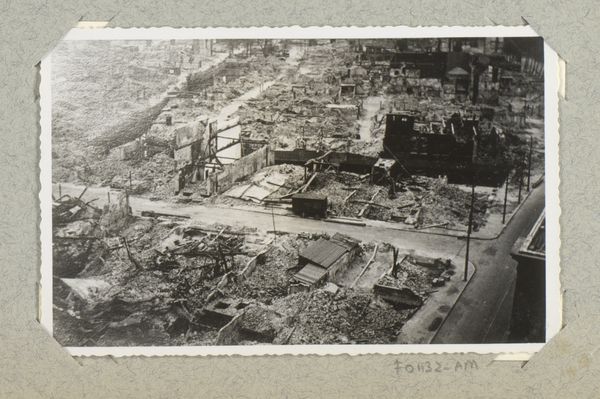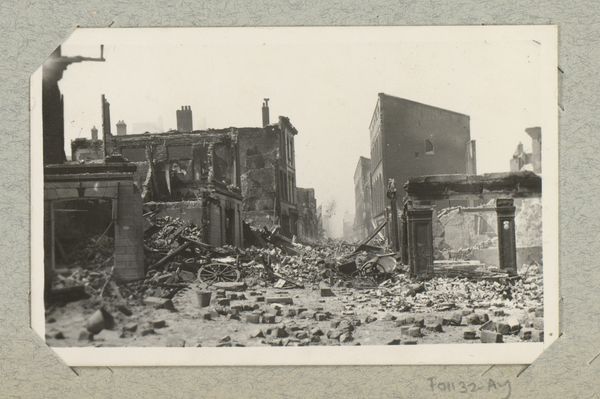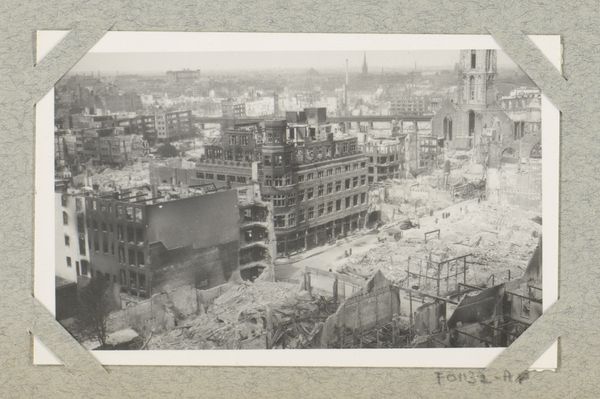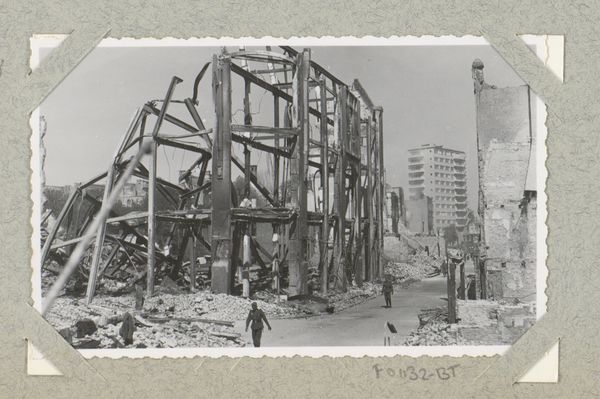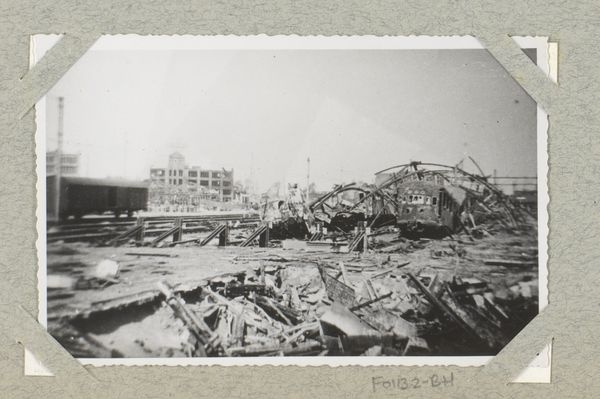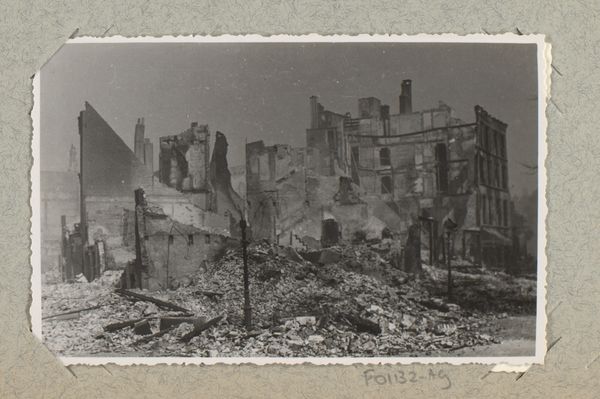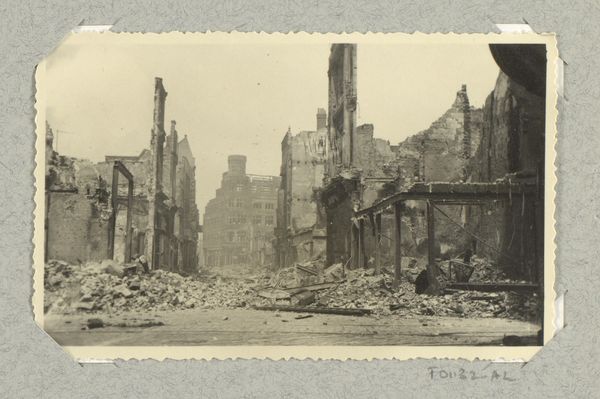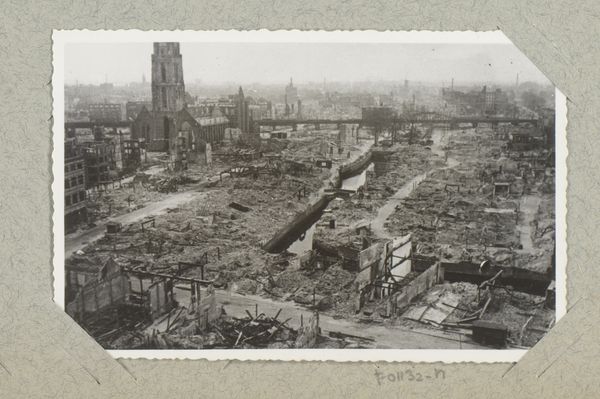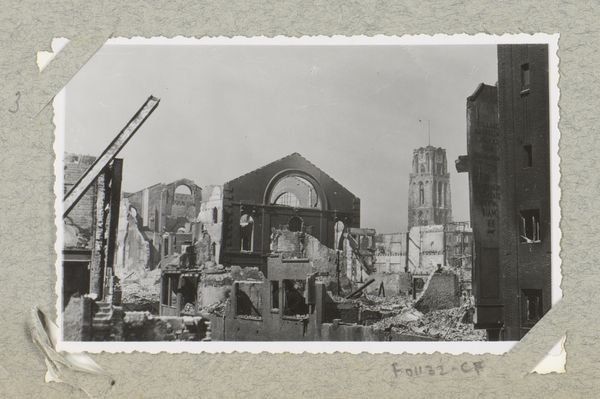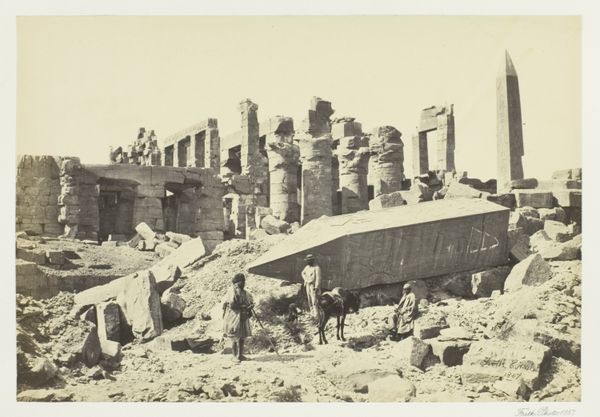
Dimensions: height 89 mm, width 139 mm
Copyright: Rijks Museum: Open Domain
Curator: Wow, the desolation is just palpable, isn't it? It really hits you. Editor: It does. The photo, a gelatin silver print attributed to J. Nolte, captures the ruins near the barracks hospital on Binnenweg in Rotterdam, circa 1940-1945. It's a stark reminder, presented as a cityscape after terrible destruction. Curator: Yes, the grayscale tones feel perfectly suited to this scene. Look at those skeletal building frames... it reminds me of photographs documenting the aftermath of war—stripped bare, devoid of life yet hinting at so much loss. It's almost spectral. I find myself searching for any small sign of normalcy amidst all the chaos. Editor: That search is intrinsic to the visual language employed here. Destruction as an icon in and of itself... ruins represent not just absence but also the hope of what might be rebuilt, transformed. Consider also how photography’s evidentiary role bolsters this narrative; the photographic image functions like an after-action report. The gelatin-silver material creates an immediate historical document. It makes an unforgettable impression. Curator: Absolutely! Photography can capture something almost ghostly—these echoes of lives lived. There's something paradoxically powerful about using such a seemingly fragile medium to capture such overwhelming devastation. Look how tiny the human figures are amid the rubble. I feel overwhelmed, frankly, even detached and objective as the photograph tries to be. Editor: Precisely. Those figures act as symbols themselves. Humans as ants— insignificant against a landscape of loss... perhaps that scale encourages viewers to project larger collective trauma onto individuals, even to empathize and remember more viscerally. That emptiness almost screams, it implores our consideration for what was sacrificed. It begs of our future. Curator: Well said, an image like this shakes something loose in us; and though stark, its artistic framing gives it a purpose. I see the hope now, if I search long enough in what appears at first to be hopeless. Editor: Yes, the interplay of history, image, and symbol allows the art to act not merely as an echo of devastation but perhaps the foundation for catharsis, offering insight from ashes, ultimately— that’s our gift here.
Comments
No comments
Be the first to comment and join the conversation on the ultimate creative platform.
